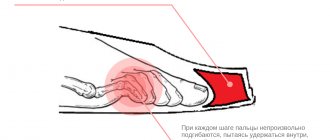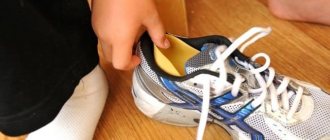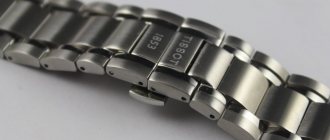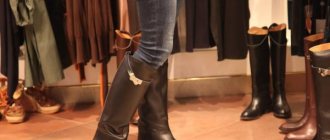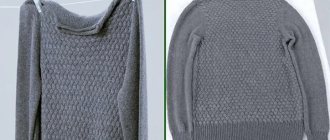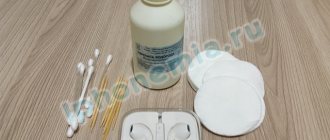Have ill-fitting jeans made you look like a Tony Hawk Pro Skater 2 character? Don't be afraid. One of the great things about denim is that it's quite easy to shrink, and if you learn how to do it correctly, you won't have to shell out for a seamstress.
Knowing how to size down your jeans will allow you to get the perfect fit with a new pair, or just tighten up your old ones if you've lost a few pounds. There are several different methods, each of which is useful in its own way, but the one you choose will largely depend on what exactly you are trying to achieve.
For example, getting a new pair of raw denim jeans down to size requires a completely different approach than knocking a few inches off the waistband of your old 501 jeans. That's why we've broken down several methods to cover all the requirements.
Below, we'll look at some of the best ways to shrink jeans, from spot shrinking problem areas to jumping into the bathtub (no, seriously). Here's everything you need to know about how to shrink your jeans size.
Pre-soak method
Suitable for raw denim. The world of raw denim is confusing. If only because half the population tells you not to let a drop of water near your new jeans for at least six months, while the other half blindly swears that you should throw them in the bath before you even wear them. So who is right? Depends.
Raw denim can be sanforized or unsanforized. Sanforized denim is pre-shrunk, but unsanforized denim is not. In the latter case, you need to get rid of the initial shrinkage yourself by first soaking the jeans. If you buy unsanforized jeans, be sure to buy them a size or two larger for this reason.
To take a bath, pour 5-10 cm of hot water (although not too hot) into the bathtub. Turn your jeans inside out and place them in water until it cools completely. You can place bottles on them to prevent them from floating to the surface.
After this, carefully remove them and hang them to dry.
Types of Denim
Today there are a wide variety of types of jeans. It is important to remember that heat treatment is not suitable for synthetic denim materials, as they can behave completely unpredictably when treated in this way. Not only will they not sit down, but they will also lose their shape and appearance.
Clothing made of cotton or with a greater predominance of cotton, 70% in composition, can be reduced by temperature methods. At the same time, do not forget to act carefully when working with the item and turn it over.
If the fabric type is suitable for heat methods, you can safely proceed with size reduction methods.
Bring to a boil
Suitable for aggressive shrinkage over the entire surface. Before we continue, please note that this method only works on 100% cotton jeans. If your jeans are made from an elastane or polyester blend, don't do this. This is also quite an extreme option, so only try it if you can afford to buy others if things go wrong.
To start, you'll need a large pot of boiling water. Turn the jeans inside out, lay them down, let them simmer for about 30 minutes and add salt and pepper to taste (not really). Once the jeans have boiled, carefully remove them from the pan and place them in the dryer on the highest setting.
Your jeans should shrink a lot when you take them out of the dryer. But be careful, there is a good chance that your jeans will eventually stretch to some extent, and if you repeat this process, they will quickly lose color.
Why do jeans stretch?
Why did previously normal pants suddenly become too big? If you don’t take into account the housewife’s weight loss, this is usually caused by the fact that the jeans have stretched during wear. In order to know how to make jeans smaller in this case, let’s figure out why this happens.
Denim fabric has a dense weave. Classic denim is pure cotton.
But even dense fabric, under the influence of mechanical loads and tension during movement, stretches over time. Cotton fibers are not so elastic that they themselves can shrink again without any external influence. As a result, the tissue in the area of the knees and hips loses its previous shape.
Some modern denim trousers have artificial or specially treated fibers added to their fabric to give them elasticity. These pants retain their shape longer, but over time, these artificial threads also wear out and stop fulfilling their purpose.
Then these pants stretch. But it will no longer be possible to return them to their previous form. Therefore, before we talk about what to do if your jeans are stretched, let’s figure out what they are.
Professional shrinking of jeans
Let's face it, using heat to shrink any material is always going to be risky. It's bad for the fabric, bad for the dye, and will never produce the results you want. Alternative? Take your ill-fitting jeans to someone who has made a career out of making clothes fit people.
Your local tailor will be able to discuss with you exactly how you want your jeans to fit and can then alter them accordingly. A pot of boiling water will never be able to offer the same level of service, so a real person will always be the best option when it comes to adjusting clothing.
Suturing locally
If your jeans look great on you but are a little big in the waistband, sewing them in along the back seam and waist can help remedy the situation.
If your favorite model has become a little loose, then it is worth stitching only along the side seams. To create a tapered hem, you should sew the jeans along the inside seams.
At the waist
Many girls have wide hips and small waists, so any pair of jeans will be loose in the waist. To solve this problem, jeans should be sewn in one of two ways.
The first method is the simplest:
- First you need to make several darts along the belt line.
- Next, you need to carefully rip off a few centimeters of the belt.
- Carefully stitch all darts.
- Cut off the extra centimeters on the belt, and then sew it back.
- You must be extremely careful when creating a dart in the buttock area, as very long seams will pull them up.
The second method is more complex, but of high quality:
- First you need to undo the belt loop, which is located in the back center. In some models, it is necessary to remove three belt loops at once. If the branded label is located nearby, it should also be removed.
- Carefully open the waistband, but only ten centimeters to the left and right of the middle seam of the product.
- Then you need to pay attention to the crotch seam and space it out by eight or nine centimeters.
- Remaining threads should be removed and all seams should be ironed thoroughly.
- The middle seam must be secured on the front side with pins to avoid possible displacement. Next, transfer the fastening with pins to the wrong side and steam with an iron.
- Fold the trouser legs together and draw a line at a slight angle at a distance of about two centimeters.
- The drawn line must be stitched and the edges of the fabric overcast.
- Next, turn the jeans right side out and make two lines in the center.
- Go to the wrong side again to sew up the crotch seam, and finish the double stitch on the front side.
- The belt must be applied to the new waist size and the extra centimeters must be trimmed, but remember the allowances.
- Next, the product must be folded in half, right sides inward, stitched and unfolded before ironing.
- Fasten the belt and the main part of the product with pins and sew the belt loop back.
In the hips
To reduce the size of jeans at the hips, you should sew them in at the side seams.
Spot shrinkage
If your jeans fit well in some places but need tightening in others, spot shrinking may be your best option. This is the practice of shrinking only certain areas of the jeans, leaving others unchanged.
There are several ways to do this, but one of the most popular is to use a spray bottle and fabric softener. Simply fill the bottle about three parts with hot water and one-part fabric softener, spray onto problem areas and let dry. If you need more significant shrinkage, you can use a tumble dryer.
Another method is to fill a sink with hot water and submerge the portion of fabric you want to shrink into it, leaving the rest of the material out of the water. Let it soak until the water is cold and then hang or tumble dry.
How to shrink a specific area
If only part of the trousers stretches, for example, jeans or shorts are too big at the waist, it is possible to narrow only this part.
To do this, follow these steps:
- fill a spray bottle with warm water;
- add fabric softener;
- shake to mix solution;
- spray the solution on your jeans so that they get wet only in the places where you want them to shrink;
- dry your jeans in an automatic dryer - the places that were damp will shrink.
By ironing
Sometimes you just need to fix your baggy butt or knees before you hit the road. Using an iron is a quick and easy way to make these small corrections without causing any nuclear damage. For best results, use an iron with a spray function. Otherwise, use a spray bottle.
Spray the area you want to lift and then go over it with the iron at high speed, being careful to keep it moving. Do this until the fabric is completely dry and repeat as many times as necessary.
Share with friends:
Suturing locally
If your jeans look great on you but are a little big in the waistband, sewing them in along the back seam and waist can help remedy the situation.
If your favorite model has become a little loose, then it is worth stitching only along the side seams. To create a tapered hem, you should sew the jeans along the inside seams.
At the waist
Many girls have wide hips and small waists, so any pair of jeans will be loose in the waist. To solve this problem, jeans should be sewn in one of two ways.
The first method is the simplest:
- First you need to make several darts along the belt line.
- Next, you need to carefully rip off a few centimeters of the belt.
- Carefully stitch all darts.
- Cut off the extra centimeters on the belt, and then sew it back.
- You must be extremely careful when creating a dart in the buttock area, as very long seams will pull them up.
The second method is more complex, but of high quality:
- First you need to undo the belt loop, which is located in the back center. In some models, it is necessary to remove three belt loops at once. If the branded label is located nearby, it should also be removed.
- Carefully open the waistband, but only ten centimeters to the left and right of the middle seam of the product.
- Then you need to pay attention to the crotch seam and space it out by eight or nine centimeters.
- Remaining threads should be removed and all seams should be ironed thoroughly.
- The middle seam must be secured on the front side with pins to avoid possible displacement. Next, transfer the fastening with pins to the wrong side and steam with an iron.
- Fold the trouser legs together and draw a line at a slight angle at a distance of about two centimeters.
- The drawn line must be stitched and the edges of the fabric overcast.
- Next, turn the jeans right side out and make two lines in the center.
- Go to the wrong side again to sew up the crotch seam, and finish the double stitch on the front side.
- The belt must be applied to the new waist size and the extra centimeters must be trimmed, but remember the allowances.
- Next, the product must be folded in half, right sides inward, stitched and unfolded before ironing.
- Fasten the belt and the main part of the product with pins and sew the belt loop back.
In the hips
To reduce the size of jeans at the hips, you should sew them in at the side seams.
To calculate the distance that needs to be removed, you can use one of the following methods:
- Turn the jeans inside out and put them on. Use pins to mark the new seam.
- Take the trousers that suit your figure, attach the ones you want to sew in and draw a line.
The process of reducing the volume of pants in the hips occurs in several stages:
- First you need to undo the belt.
- Next, rip the legs apart at the sides and stitch them along the new seams.
- Cut off excess material and sew down the sides.
- Sew the belt into place.
If the jeans are spacious in the hips and waist, then the belt should not be steamed. The trouser legs must be completely ripped open and carefully sewn to the new dimensions.
Materials and tools you will need when working with jeans at home
If you are constantly doing handicrafts, you will have all the necessary tools at hand. The rest of the girls and women need to prepare the following:
- threads matching the color;
- needles for basting and stitching;
- pins;
- tape measure;
- chalk or pencil;
- wide elastic band;
- sewing machine.
Having an assistant is very helpful!
Why is the procedure needed?
Why make jeans smaller when clothing stores already have enough choice? Firstly, we are not all perfect, and often choosing pants that fit our figure becomes a big problem. Sometimes it’s wide at the waist, sometimes it’s narrow at the shins, and you also have to hem it and remove the length. Thanks to special washing conditions, you can adjust the model you like to suit you.
Secondly, not all types of denim are wear-resistant. You will have to reduce the size of your pants if they are stretched. The product itself looks good, emphasizes the figure, only the elongated knees spoil everything. Some people don’t want to splurge on new pants every time the problem of pulling out the old ones arises. The procedure will also help those who have suddenly lost weight.
At home, you can make clothes one size smaller with just washing. It is unlikely that it will be possible to reduce an item by 2 sizes; in such cases it is better to resort to a sewing machine.
Useful tips
To properly sew jeans along the inside or outside side seam, you should follow some recommendations:
- It is best to mark new side seams with chalk or soap, since these components are easily removed from the material by regular steaming.
- It is recommended to use white thread to mark the new side seam as it does not contain any dye and will stand out clearly on the jeans so it is easy to remove.
- At the end of the procedure, the product should be ironed so that the side seams and fabric unevenness are evened out.
- Not every home sewing machine is capable of sewing denim, so if the fabric is dense, you should contact a studio.
Recommended reading: Are aluminum cookware harmful?




